How Mobile Time and Labor Helps Employees
The advantages for employees are significant. First off, mobile time and labor solutions provide employee self-service HR. This lets your team members track their own time and attendance, see their pay stubs, access benefits information, request time off and trade shifts.
Secondly, a mobile system pushes notifications to employees’ phones. This includes an alert when a schedule is posted or if there are changes to an existing schedule. Plus, the system will send a notification if an employee forgets to punch in or out, receives approval for PTO or can proceed with a shift swap. Consider that the average American checks their phone every 5 minutes (Review.com). Is there a better place for work notifications? Would schedule adherence improve at your company if your employees could check their schedule anytime, anywhere 24/7?
We have seen dramatic improvements in communication, employee satisfaction and labor dollar ROI when our small business clients adopt mobile workforce management. As an example, let’s discuss a field service business.
How Mobile Time and Labor Helps Your Company Stay Compliant
It’s critical that small business owners understand regulations and create a culture of compliance. Accurate payroll is the foundation for compliance. If you don’t get timekeeping right, it can put you on shaky legal ground with the Department of Labor and the Internal Revenue Service.
With a mobile time and attendance solution, compliance is a whole lot easier. A mobile system helps you:
● Track all time for mobile employees, prevent off-the-clock work, and use geofencing for location confirmation.
● Calculate and pay overtime to non-exempt employees.
● Track FMLA and PTO separately and accurately
● Follow all state and local shift scheduling laws (predictive scheduling, fair work week, stable scheduling, etc.)
● Comply with rules for final paycheck and unused PTO
● Classify employees and contractors correctly
Recordkeeping
You could do all the things mentioned previously and still fail this one if you don’t keep good records. When in doubt, don’t throw it out.
● Keep payroll records for 3 years
● Keep timesheets, piecework records, wage rate tables, work schedules, and record of additions to or deductions from paychecks for 2 years
A mobile workforce management system has tools to help with all of these!
How Mobile Time and Labor Helps Your Company Grow
Automating mobile workforce management will save money and time that would be better spent on things that generate revenue and help you expand your business. Unlocking value from mobile workforce management isn’t just about time and money, though. With the right solution, employers can also reduce their compliance risk and boost employee retention–both of which are essential for growth.
To recap, here are some specific ways mobile time and labor can help your business grow:
- Reduce administrative costs
- Lower the risk of a compliance violation that could set you back financially and tarnish your reputation
- Improve employee scheduling which elevates customer service, increases customer loyalty and boosts word-of-mouth advertising
- Avoid overtime and hours fraud (buddy punching, timecard manipulation)
- Establish trust between employees and management
- Generate labor data for better business decisions
Ready to grow your business with the only mobile time and labor solution designed for the mission critical needs of your small business? Call us now!
THIS ARTICLE IS FOR GENERAL INFORMATION PURPOSES ONLY. BUSINESS FINANCIALS, INC. (BFI) IS NOT ISSUING SPECIFIC FINANCIAL OR TAX ADVICE. PLEASE CONSULT WITH A LICENSED FINANCIAL PLANNER, TAX ATTORNEY, OR ACCOUNTANT FOR ASSISTANCE WITH YOUR SPECIFIC SITUATION. IF YOU NEED HELP, WE INVITE YOU TO CONTACT US. WE WILL BE HAPPY TO MAKE RECOMMENDATIONS OR REFER YOU TO A LICENSED PROVIDER WHO MAY BE BEST SUITED FOR YOUR SITUATION.





